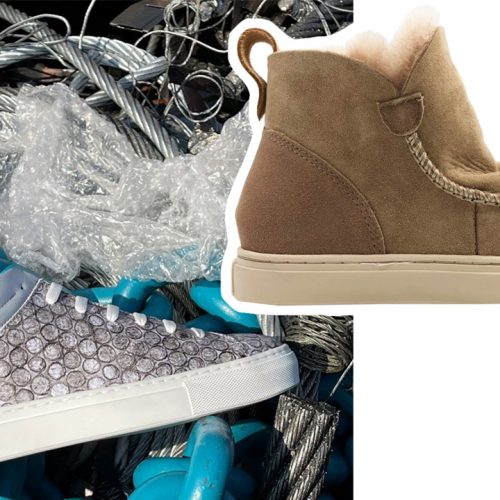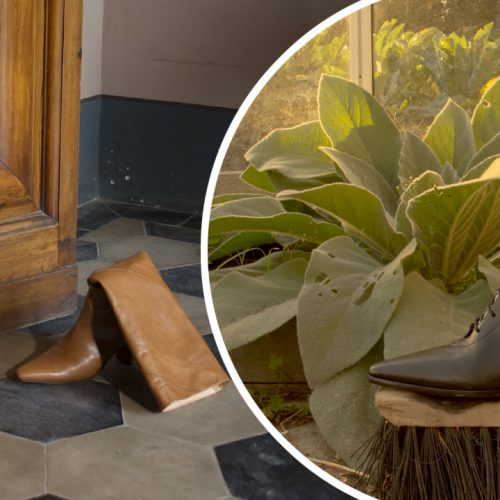Actually, Agnes Wagter, who herself was blessed with shoe size 43, wanted to design a shoe line for big feet. During a walk on the beach after a stormy night, she spontaneously changed her concept. She wanted to keep making shoes. But shoes with a mission. Her models should help reduce the biggest problem facing our oceans, plastic waste. The model? Espandrilles. Interpreted in a modern way. Classic, as a slip-on and as a jogger with laces. It goes without saying that Seads produces their bright, good-mood shoes in sizes 36 to 46. Because every size matters!

The completely circular Seads concept:
⊕ Marine litter pollutes the planet and is a valuable raw material at the same time. If you use it properly, the oceans will become a little bit cleaner without wasting new raw materials..
⊕ Part of the profits will be donated to organizations that are committed to finding a solution to the plastic problem on the planet.
⊕ Seads should solve a problem without becoming it. It goes without saying that the espandrilles were developed in such a way that they can be recycled and new products can be created from them.
Reduce the plastic footprint with every step. It couldn’t be better.
Currently, 12 million tons of plastic end up in our oceans every year. That corresponds to the contents of a garbage truck that is dumped into the sea every minute. Ascending trend. That is why Agnes has looked for partners with whose help marine and landfill-bound plastic can be transformed into high-quality good-mood products with a message.
It’s not about saying ‘no’ to plastic. It’s about saying ‘no’ to throwing plastic away
The Seaqual Initiative brings together NGOs, local communities, fishermen, research institutes, regional and national authorities, brands and manufacturers in the fight against plastic pollution. In cooperation with the waste management and recycling industry, she produces upcycled marine plastic and uses it to make Seaqual® Yarn, which is used to make knitted espandrilles.

Voila, the Seads materials
⊕ Seaqual® Yarn is used for the upper material. This is 100 percent recycled yarn, 10 percent from upcycled marine plastic and 90 percent from recycled PET packaging from households. Every kilo of Seaqual® Yarn removes around one kilo of marine litter from the oceans.
⊕ The three models contain two to four percent elastic thread that can be extracted before recycling.
⊕ Recycled (and fully recyclable) polyester that has a lower carbon footprint than new polyester and uses 70 percent less energy to manufacture.
⊕ Vegan leather made from recycled polyester, which can be produced free of pollutants, without toxic waste water and exhaust gases.
⊕ 100 percent biodegradable jute.
⊕ 100 percent recyclable and biodegradable natural rubber
But the less-waste concept doesn’t stop with the material: Together with RePack, Seads is committed to combating plastic waste caused by eCommerce. The RePacks, which can be reused up to 50 times, are made from recycled polypropylene, which is 100 percent recycled at the end of its useful life and makes disposable materials such as bubble wrap, plastic and cardboard superfluous. Pssst: In order not to cause unnecessary returns, there is the size chart to help you find the perfect pair.
From garbage to treasure and new products. Again, again and again.
And because the espandrilles shouldn’t end up in the bin at the end of their lifecycle either, the Essen brand is doing something together with Iteratif. Europe’s first fully circular shoe production platform ensures that the life of espandrilles goes on and on. Applied? Order RePack by email, bag the seeds and send them back for upcycling. Back home, they are broken down into their material components and recycled into raw material, so that they can then be processed again into new beads.
The future of fashion is circular. Seads espandrilles are already today.
And how did the octopus get into the logo? The octopus can adapt to its surroundings and, thanks to its three hearts and nine brains, is extremely intelligent, agile and capable of learning. For Seads, the octopus embodies action, transformation and change. After all, that’s what we all want!









